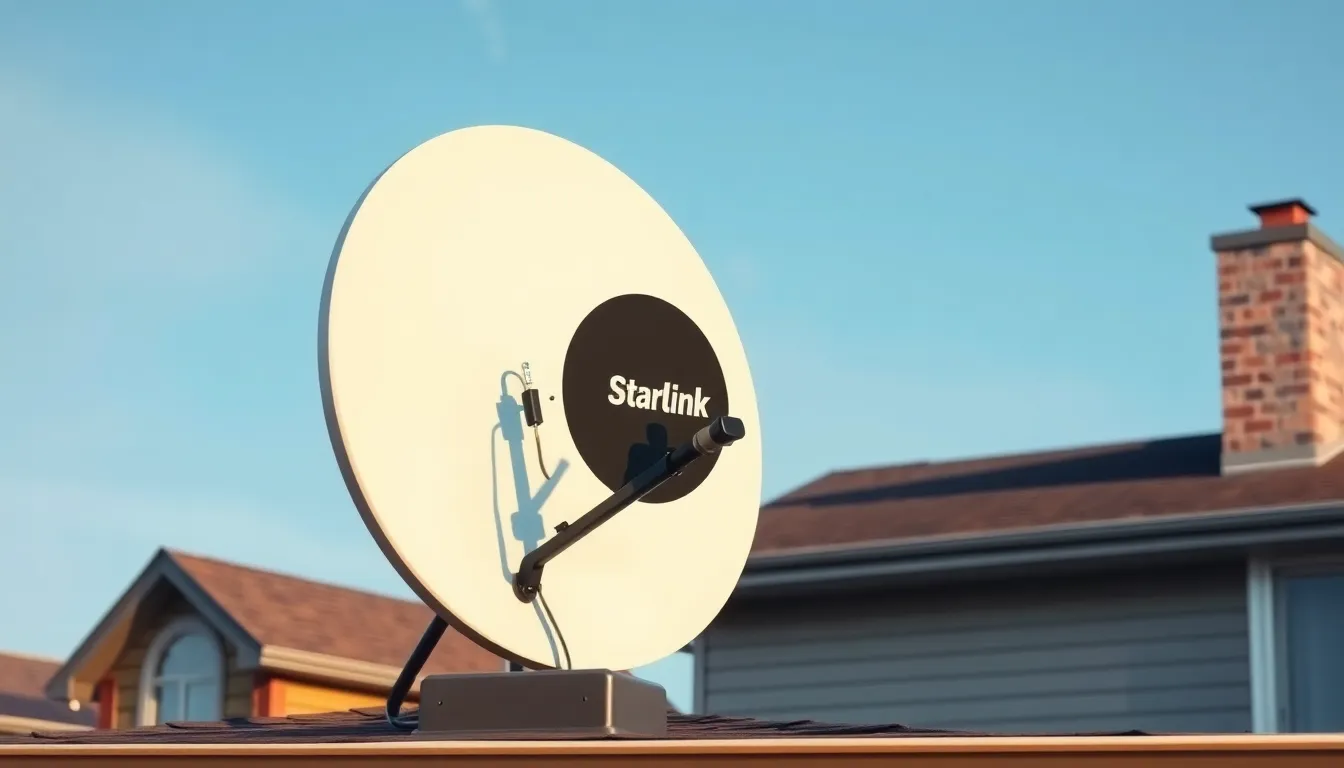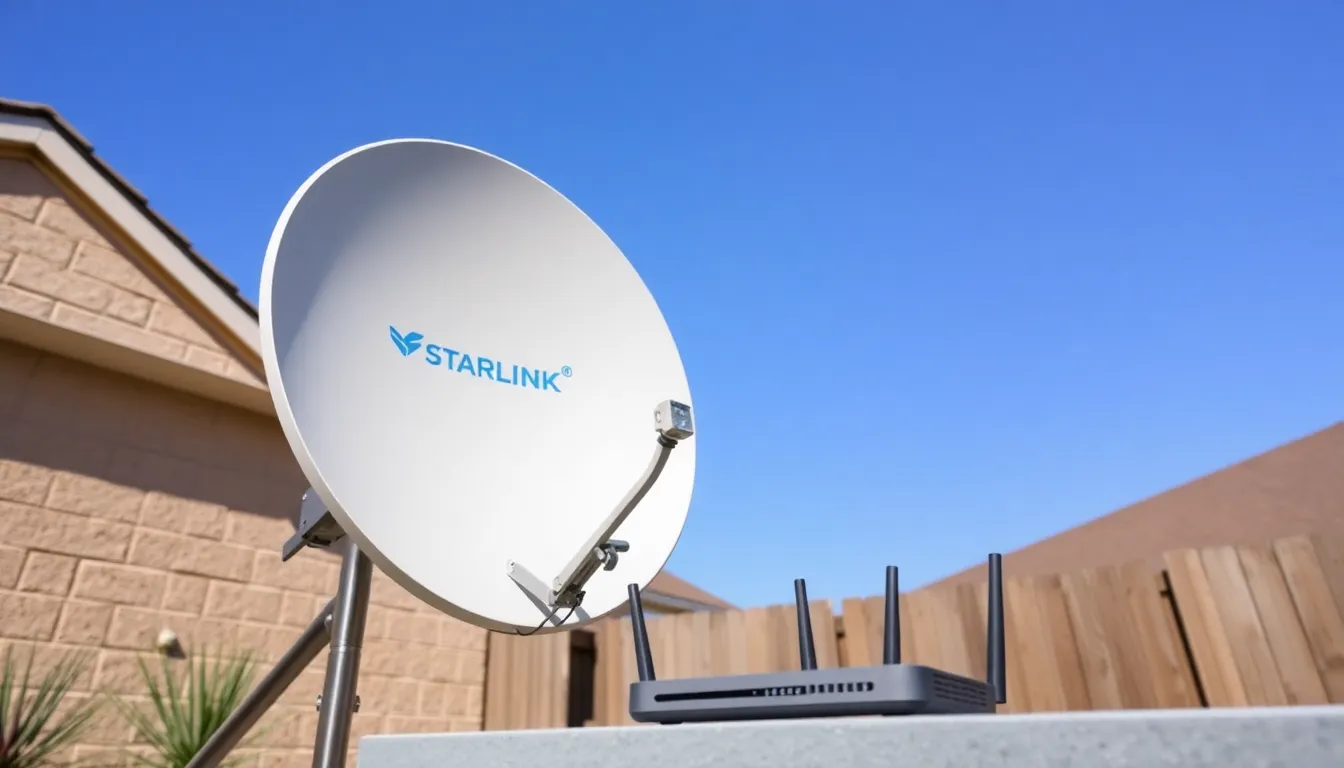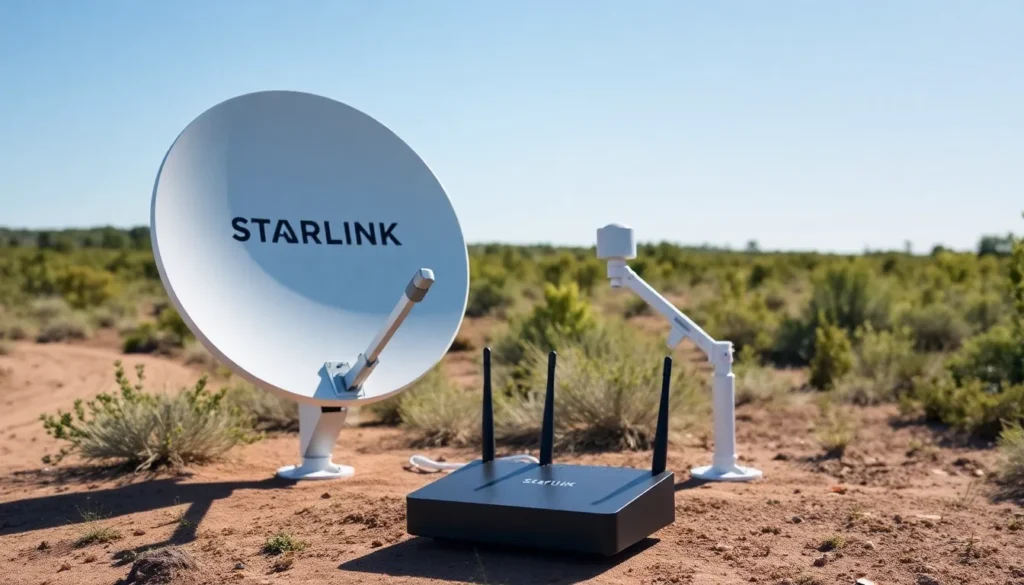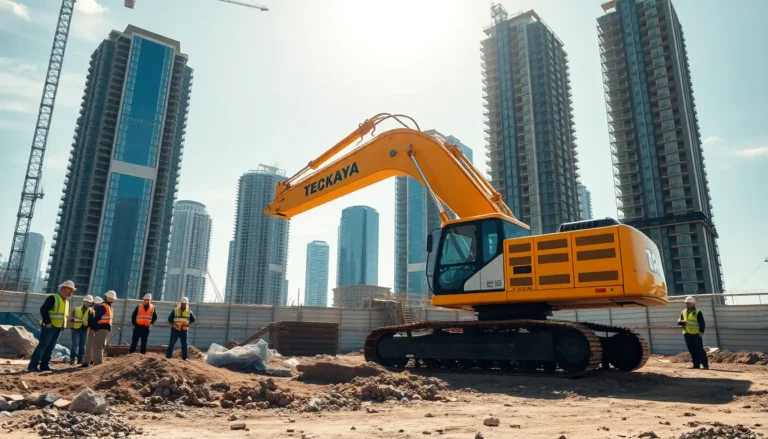Table of Contents
ToggleIn a world where buffering videos feels like a cruel form of torture, Starlink is here to save the day—or at least your Netflix binge. This satellite internet service promises high-speed connectivity even in the most remote corners of the globe. But before you get too excited about streaming in the middle of nowhere, there’s a small detail to consider: the hardware cost.
The price tag for Starlink’s setup might make you do a double take. With a satellite dish that looks like it could double as a UFO landing pad and a router that’s anything but ordinary, it’s essential to understand what you’re investing in. Is the cost worth the promise of seamless connectivity? Let’s dive into the numbers and find out if this tech marvel is a steal or if it’ll leave your wallet feeling a little lighter.
Overview of Starlink Hardware
Starlink hardware consists of key components necessary for establishing a reliable satellite internet connection. Understanding these components helps assess the overall investment required for setup.
Components of Starlink Hardware
Starlink’s primary hardware includes a satellite dish, known as a phased-array antenna, and a Wi-Fi router. The satellite dish measures approximately 23 inches across and features advanced technology to maintain a consistent connection with satellites. The router enables users to connect multiple devices to the internet. Prices for the satellite dish and router typically total around $549. Additional factors include accessories such as mounting kits and cables that may incur extra costs.
Installation Requirements
Installation requires a specific setup for optimal performance. Users need a clear view of the sky to facilitate satellite communication. Complying with local regulations is crucial, as some areas may have installation restrictions. Assembling the equipment often takes less than an hour with basic tools. Professional installation services are available, although they may add around $100 to the project’s total cost. The user must also secure an electrical outlet near the router for seamless operation.
Cost Breakdown


Understanding the costs associated with Starlink’s hardware is crucial for potential users. The initial and ongoing expenses play significant roles in determining the overall financial commitment.
Initial Costs
A typical setup for Starlink involves an initial investment of approximately $549. This amount covers the satellite dish and Wi-Fi router essential for service. Users may choose to opt for professional installation, which can add another $100. A clear view of the sky is necessary for optimal performance, so potential customers must also consider any additional costs for mountings or tools that may be needed to achieve this.
Ongoing Subscription Fees
Starlink’s service includes a monthly subscription fee of around $110. This fee allows access to high-speed internet in remote locations. Users benefit from unlimited data, which sets Starlink apart from some conventional internet services that impose data caps. While the ongoing fees may seem steep, the value comes from reliable connectivity, especially in underserved areas.
Comparison with Other Satellite Services
Starlink’s hardware costs and subscription fees are competitive when measured against traditional satellite internet providers.
Competitive Pricing
Starlink’s initial hardware fee of $549 competes well within the satellite internet market. HughesNet and Viasat also charge for installation; however, their initial equipment costs exceed $500. While HughesNet has basic plans starting around $50 per month, service quality drops with lower-priced tiers. Viasat offers higher-speed options but typically charges more than $110 monthly. These providers impose data caps, leading to additional fees for overages. In contrast, Starlink’s price structure maintains transparency, focusing on straightforward access without surprise expenses.
Value for Money
Starlink offers notable value through its unlimited data feature at a fixed $110 monthly fee. This arrangement sets it apart from other satellite services that impose strict data limitations, typically forcing users to pay extra for additional data. Speeds of 50 to 150 Mbps from Starlink promise a reliable connection for streaming and online gaming. Meanwhile, conventional providers struggle to deliver consistent speeds during peak usage times. Cost analysis shows that Starlink users receive robust internet access without throttling, leading to an enhanced experience, particularly in remote areas.
Financial Considerations
Starlink’s hardware costs represent a significant component of the overall expenses, requiring careful planning. Initial costs typically amount to $549 for the satellite dish and router, crucial for setup. Professional installation may add around $100, depending on the user’s preferences. Budgeting for tools and potential mounting equipment also plays a role in the initial expenses.
Budgeting for Starlink
Understanding total costs is essential. Monthly subscription fees stand at $110, granting users unlimited data access. Assessing ongoing expenses alongside initial costs ensures comprehensive budgeting. Some users find it beneficial to allocate funds for equipment maintenance or future upgrades. Monitoring subscription rates and promotions may yield potential savings, enhancing overall financial planning.
Long-Term Investment Analysis
Evaluating long-term benefits is crucial. Starlink’s pricing model offers advantages over traditional satellite providers with data caps. Commitments to an unlimited data plan provide peace of mind for streaming and gaming without worrying about overage fees. Users should consider the reliability of service in remote areas, where conventional internet often falls short. Tracking performance improvements over time can further validate the investment in Starlink’s technology.







